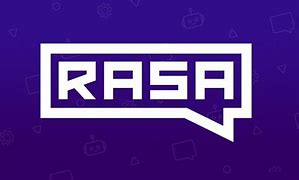
Compare customer lifetime values
One way to calculate the customer referral value is to find the average lifetime value of all your referred customers:
Here’s what this customer lifetime value calculation looks like in formulas:
Average Customer Value = [Average Purchase Value x Average Purchase Frequency] – Average Customer Acquisition Cost
Customer Lifetime Value = Average Customer Value x Average Number of Years Customers Stay
For example, if a business has an average purchase value of $10,000, an annual purchasing frequency of 3, and an average customer acquisition cost of $5,000, the customer lifetime value is [10,000 x 3] – 5,000 = 30,000 – 5,000 = $25,000.
The resulting figure is the average customer value. Multiply that by the average number of years individuals remain customers. That should give you the referral customer lifetime value.
For non-referred customers, the formula above is also applicable. Calculate the average purchase value and multiply it by the customers’ average purchase frequency. Subtract the average customer acquisition cost and multiply the resulting value by the average number of years a customer remains loyal.
Compare this figure with the referral customer lifetime value to see which is better. The same formula is also useful in calculating the overall customer lifetime value before and after starting the referral program.
Make referring as simple as possible
Customers should be able to find your program and refer in as few clicks or taps as possible. Then, once they’re on the program page, clearly explain how the program works in just 3-4 easy steps. Ensure the sign-up form doesn’t demand too much information.
Even better, link the referral program to the customer’s brand login information so they can start sharing right away, without registration. Or, send them dedicated links for automatic access to the program, without the need for any manual login. Select referral software programs, like Referral Rock, have this valuable feature so you won’t miss out on referral opportunities.
Examine the viral loop
You might also examine the customer lifetime value, or yearly revenue, specifically of referred customers who successfully bring in other customers. Add up the value of these customers and the customers they brought in.
This doesn’t show your business’ full referral value, but it does focus in on the impact of those referred customers who have become advocates and continued the viral loop.
QALI Hair Extension Studio
QALI Hair Extension Studio is a full-service salon in Vancouver, Canada, with an ecommerce site that sells hair products.
To incentivize its loyal customers to refer their family and friends, the brand created a points-based referral marketing program called TreatPoints. Customers earn points for every purchase—be that services in the salon or products.
Good AirX built its referral program to capture customers already buying through its ecommerce store.
Both the referrer and the new customer are incentivized through discount codes: referrers get 10% off future products; new customers get 7% off.
Fashion retailer LIVELY offers referrals as part of its reward program, in which subscribers get one point for every $1 spent (and can sign up on the brand’s webpage).
Referrers are incentivized to share 15% off and get 15% off in return if the referred customer shops with LIVELY. Within 48 hours of launching its initial rewards program, LIVELY received 133,000 emails and Its ecommerce store saw 300,000 online sessions.
Keep optimizing your program
You don’t have to keep using the same referral program settings, no matter how successful it is. Instead, review and improve your programs based on customer feedback and performance metrics. Try A/B testing different page layouts, copy, and more, to see what drives the most conversions. Get reliable referral software to access real-time data. Where there’s a need, implement the necessary changes to keep going.
Customer referral value is the amount of revenue generated by a contact and the clients referred by them. Referrals are cost-effective and help improve the trust and credibility of your brand. You can calculate customer referral value by comparing customer lifetime values or getting net annual revenue.
Businesses that focus on customer satisfaction, use strategic rewards, invest in referral software, and promote reward schemes can increase this value. Even so, there’s a need to simplify the referral process, encourage customers to share on social media, and optimize referral programs.
Era ekonomi digital memudahkan pelanggan untuk berjejaring, berinteraksi dan berkomunikasi. Oleh sebab itu, sebagian besar perusahaan menyadari pentingnya membangun hubungan dua arah dengan pelanggan baik yang bersifat transaksional maupun non-transaksional. Proses interaksi dua arah ini dikenal sebagai “Customer Engagement.’
Begitu besarnya pengaruh customer engagement menciptakan nilai bagi perusahaan. Situasi ini mendorong sejumlah studi untuk mengeksplorasi ukuran customer engagement yang efektif. Salah satunya, Kumar et. al (2010) menyampaikan empat komponen penting customer’ engagement value (CEV), yakni: customer lifetime value, customer referral value, customer influencer value dan customer knowledge value.
Customer lifetime value (CLV) merupakan ukuran yang berkaitan erat dengan perilaku pembelian oleh pelanggan baik pembelian berulang ataupun pembelian tambahan melalui up-selling dan cross-selling. CLV merupakan nilai profit yang diperoleh perusahaan dari pelanggan. CLV memberikan sinyal terkait keberlanjutan bisnis di masa depan.
Customer referral value (CRV) merupakan jumlah akuisisi pelanggan baru melalui program referral reward yang diinsiasi perusahaan. CRV fokus pada pelanggan saat ini dan mendorong mereka untuk merekomendasikan produk di jejaring sosial mereka (baik online maupun offline). Dari sisi perusahan, pelanggan yang merujuk dianggap sebagai tenaga penjualan non-karyawan karena mendatangkan pelanggan baru dan mendapatkan komisi dari penjualan (Kumar et. al, 2010).
Customer influencer value (CIV) merupakan pelanggan yang memiliki pengaruh untuk mengajak konsumen lain untuk membeli produk. Meski terlihat sama, ada perbedaan antara CIV dan CRV. CRV dilakukan karena ingin memperoleh imbalan yang ditawarkan referral reward yang diinisasi perusahaan sedangkan CIV dilakukan secara sukarela karena pelanggan tersebut merupakan pelanggan loyal dan merasakan sendiri keunggulan produk.
Customer knowledge value (CKV) merupakan ukuran umpan balik yang diberikan pelanggan kepada perusahaan. CKV dapat berupa ide inovasi produk/layanan baru ataupun upaya peningkatan kualitas produk dan layanan. CKV berkaitan erat dengan partisipasi aktif pelanggan melakukan co-creation dengan perusahaan. Studi Fuller, Matzler, dan Hoppe (2008) menemukan bahwa anggota brand community yang memiliki passion pada produk dan brand, biasanya memiliki pengetahuan produk yang luas dan berkontribusi aktif pada forum diskusi terkait produk untuk memecahkan masalah penggunaan produk dan kadang menghasilkan ide produk baru.
Pelaku usaha yang mampu memaksimalkan customer engagement melalui komponen CLV, CRV, CIV dan CKV akan memiliki keunggulan daya saing untuk pertumbuhan bisnis yang berkelanjutan. Semakin besar pengaruh customer engagement keberlangsungan sebuah bisnis, maka Pak Bi kerap mengingatkan agar pelaku usaha membangun kedekatan dengan konsumen. Salah satu upaya yang dapat dilakukan dengan beralih dari fokus pada produk menjadi fokus kepada konsumen.
Caranya dengan menerapkan 4E, yang membuat konsumen menjadi Evangelist untuk terlibat secara aktif (Engagement) menyampaikan keunggulan Produk Anda (Excitement) dan bersedia menjadi reseller Anda (Everywhere)
Bagi pelaku usaha yang berminat untuk beralih dari fokus pada produk menjadi fokus kepada customer, maka workshop “Branding Marketing Selling” menjadi pilihan yang tepat
Segera daftarkan diri anda di Branding Marketing Selling” tanggal 30-31 Januari 2023.
Ini saatnya Indonesia “Membumbui Dunia dengan Brand Made in Indonesia”
Kreasi Anak Bangsa, Cita rasa untuk Dunia
Cita Rasa Dunia … Indonesia
Silakan subcribe channel Youtube pak Subiakto di Subiakto Official untuk mendapatkan inspirasi dan insight dalam membangun bisnis yang sustainable dan profitable.
A referral program is a system that incentivizes previous customers to recommend your products to their family and friends.
Retail stores create their own customer referral programs as a way to reach more people and grow revenue.
Compared to other types of marketing strategies (such as traditional television ads), referral marketing can be more cost-effective because you are tapping one of your most valuable resources: existing loyal customers. Incentivizing these customers to become brand advocates can benefit your business in the long term.
Considering starting your own referral program? Here is a deep dive into how these programs work, the benefits of having one, and a six-step guide to creating your own.
Instant demo: See Shopify POS in action
Discover how Shopify POS helps you manage in-store and online sales from one powerful platform.
Determine the incentives
Incentivizing customers to make a referral can be an effective tactic to get more people using your program. Make a plan to determine which customers receive rewards and clearly state the details on your website.
Some companies give both the referrer and the new customer an incentive for joining. This is a win-win: New customers are incentivized to purchase through a referral link. When they do, the person who referred them is also rewarded.
Dollar credits are among the most popular referral rewards. Percentage discounts are also commonly offered as rewards. Other reward options include free products, free month subscriptions, and points to redeem on future purchases.
Regardless of which incentive you chose, a solid understanding of your customer lifetime value (CLV) is key. You want the cost of acquiring each referred customer (i.e., the cost of the incentive) to be less than the total revenue brought in by the customer.
Start with a great product
Develop a referral program with a great product by going through the product development process. This includes conducting market research, sourcing quality materials and finding reputable suppliers, and testing your product from prototype to soft launch before its full release to your target audience.
These steps are key to creating a product that is high-quality, reputable, and valued by your customers—the entry point to building a solid reputation.
How does a referral program work?
A referral program reaches out to loyal customers to let them know about incentives they can earn based on how many personal referrals they send to the company. Marketing outreach may start as an email exchange, SMS message, or pop-up on your website. The customer can opt into the referral program and then send their link or code to others to use; the referred customer may also receive some type of reward or discount.
Invest in the right referral software
Referral software tracks all the metrics you need to determine referral value, so you have full visibility on your program. This way you can see whether your program needs improvement and take the steps to improve it.
The right referral software will help you customize the program and rewards structure how you desire, encourage more referrals through automated engagement, track referral metrics in detail, and integrate with your existing processes.
Referral Rock referral software helps you put your referral program on autopilot, by automating tasks like distributing referral links, issuing rewards, and keeping referrers engaged.
It’s flexible enough to run advanced referral reward structures, boasts robust referral tracking, and has 30+ integrations. Plus, dedicated onboarding specialists will assist you with every step of setting up your program.
Focus on customer satisfaction
Customers are more likely to recommend brands about which they feel 100% satisfied by. So, create an unforgettable customer experience. A report in Forbes suggests providing responsive customer service, as customers will be more likely to talk about your business if you respond to their needs promptly. Also, build effective feedback loops through which you can get feedback from customers, and promptly act on it.
Having a satisfied and loyal customer base could benefit your business in many ways in the long run. It could lead to an improved brand reputation, increased customer loyalty, a reduced customer churn rate, and improved revenues and profits.























